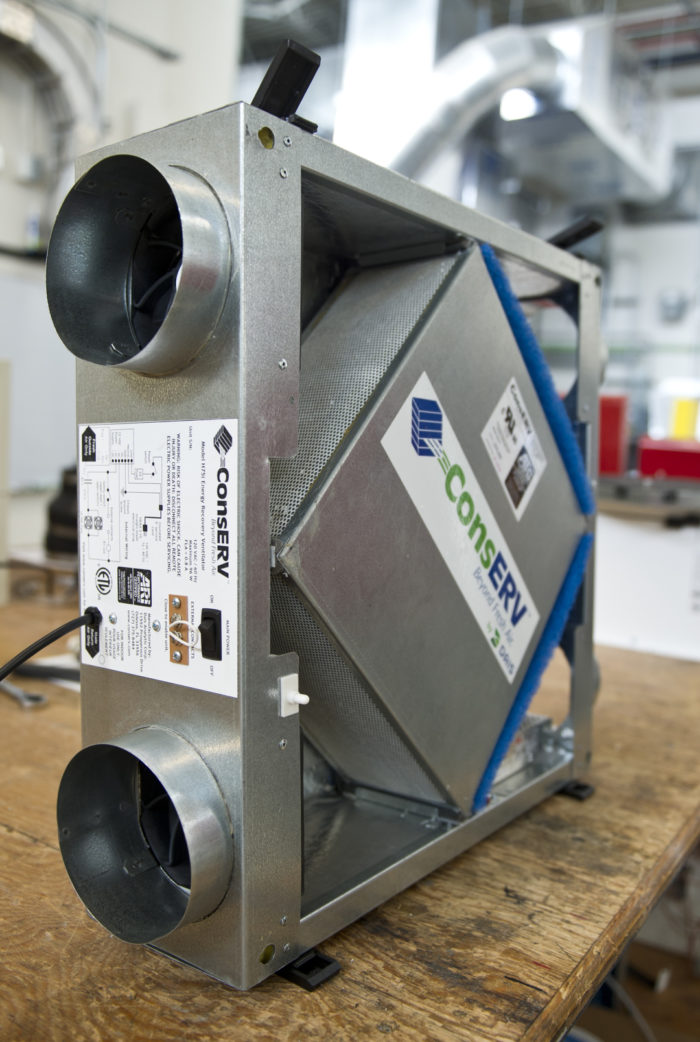How Heat Recovery Ventilation Boosts Indoor Air Quality and Reduces Power Prices
Heat Recovery Ventilation (HRV) systems play a crucial function in boosting indoor air top quality while concurrently lowering power costs. By successfully exchanging stagnant indoor air with fresh outside air, HRVs help preserve optimal humidity and lower toxins. Furthermore, their ability to recuperate warm from outward bound air decreases the pressure on home heating and cooling down systems. As energy costs remain to increase, recognizing the full capacity of HRV systems comes to be progressively vital for house owners and companies alike.
Understanding Heat Recovery Ventilation Solutions

Heat recovery ventilation (HRV) systems play an essential duty in improving interior air top quality, particularly in contemporary, energy-efficient buildings. These systems are developed to transfer warm from the outbound stale air to the incoming fresh air, thereby minimizing power loss while maintaining perfect temperature level degrees inside. HRVs include a warm exchanger, followers, and ductwork, promoting the continual flow of air. By removing interior pollutants and presenting fresh air, HRVs assist to balance humidity levels, avoid mold and mildew development, and decrease irritants. The efficiency of HRV systems hinges on their capacity to recoup approximately 80% of the heat from the worn down air, advertising energy conservation while guaranteeing a healthy indoor environment. Their assimilation is essential in achieving sustainable living methods.
The Significance of Indoor Air High Quality
Indoor air quality (IAQ) is an important variable influencing the health and wellness and wellness of residents in any kind of setting. Poor IAQ can cause numerous wellness concerns, consisting of respiratory system issues, allergies, and tiredness. In addition, it can intensify status quo such as asthma. Factors adding to reduced IAQ consist of pollutants from indoor sources like cleansing representatives, mold, and inadequate ventilation. Maintaining great IAQ is essential for promoting a secure and comfortable living or working area. Effective techniques to enhance IAQ entail routine surveillance of air quality, correct ventilation systems, and minimizing the use of unsafe materials inside your home. By focusing on IAQ, people can ensure a much healthier environment that fosters performance and total lifestyle.
Energy Performance Conveniences of HRV Systems
Numerous home owners and structure supervisors are progressively recognizing the power efficiency advantages of heat recuperation ventilation (HRV) systems. By transferring warmth from tired interior air to incoming fresh air, HRV systems considerably lower the power needed for cooling and heating. This process reduces reliance on conventional a/c systems, causing lower energy expenses. Furthermore, HRVs aid preserve a balanced interior environment, preventing extreme home heating or cooling down needs. The ability to recuperate up to 90% of the warm from outgoing air additionally sustains sustainability initiatives by minimizing overall energy consumption. HRV systems contribute not just to cost financial savings but likewise to a decreased carbon impact, aligning with the expanding emphasis on energy-efficient building techniques.
Installment and Upkeep Considerations
The effective implementation of warmth recuperation air flow (HRV) systems needs cautious factor to consider of installation and maintenance elements to assure peak efficiency. Appropriate positioning of the HRV system is necessary, as it should be set up in a place that maximizes air flow while decreasing noise disruption. Additionally, ductwork needs to be appropriately sized and shielded to stop power loss. Regular maintenance, consisting of filter substitute and system cleaning, is vital to safeguard optimal this contact form performance and indoor air quality. Proprietors should develop a routine upkeep routine to recognize and deal with prospective issues prior to they escalate. Cooperation with seasoned professionals during both installation and upkeep stages can boost the durability and effectiveness of HRV systems, ultimately causing far better interior environments and lowered energy prices.
Real-World Applications and Success Stories
Discovering real-world applications of warm healing air flow (HRV) systems discloses their considerable influence on indoor air top quality and power effectiveness throughout different settings. In residential buildings, property owners have actually reported improved air quality, resulting in less allergic reactions and respiratory issues. Schools implementing HRV systems have kept in mind improved trainee focus and decreased absence due to better air flow. Commercial structures, such as workplaces and retail spaces, have actually experienced reduced power costs and boosted worker productivity. A business workplace in a warm environment resource achieved a 30% decrease in power expenses after setting up an HRV system. These success tales demonstrate that HRV innovation not just adds to healthier atmospheres yet additionally supplies tangible economic advantages, making it a valuable financial investment for different industries.
Often Asked Inquiries
Can HRV Systems Decrease Allergens in Indoor Air?
The performance of HRV systems in reducing indoor allergens primarily depends upon their capacity to filter and exchange air. HRV Heat Recovery Ventilation. By continuously replacing stale air, these systems can significantly decrease irritant degrees throughout interior environments

Exactly How Does Moisture Affect HRV System Efficiency?
Humidity considerably influences HRV system performance; high degrees can lead to condensation, minimizing effectiveness, while reduced humidity might improve air exchange. Balancing humidity is crucial for ideal operation and maintaining indoor air top quality.
Are HRV Equipments Noisy During Procedure?
HRV systems can create varying noise levels during procedure, relying on their design and setup. Some units operate silently, while others may produce visible noise, specifically at higher air flow settings or when badly maintained.
What Is the Ordinary Life-span of an HRV System?

Can HRV Equipments Be Utilized in All Environments?
HRV systems can be used in various environments, yet More Help their performance may differ - HRV Heat Recovery Ventilation. In extreme temperature levels, changes or supplemental systems could be required to assure suitable efficiency and comfort while maintaining interior air high quality